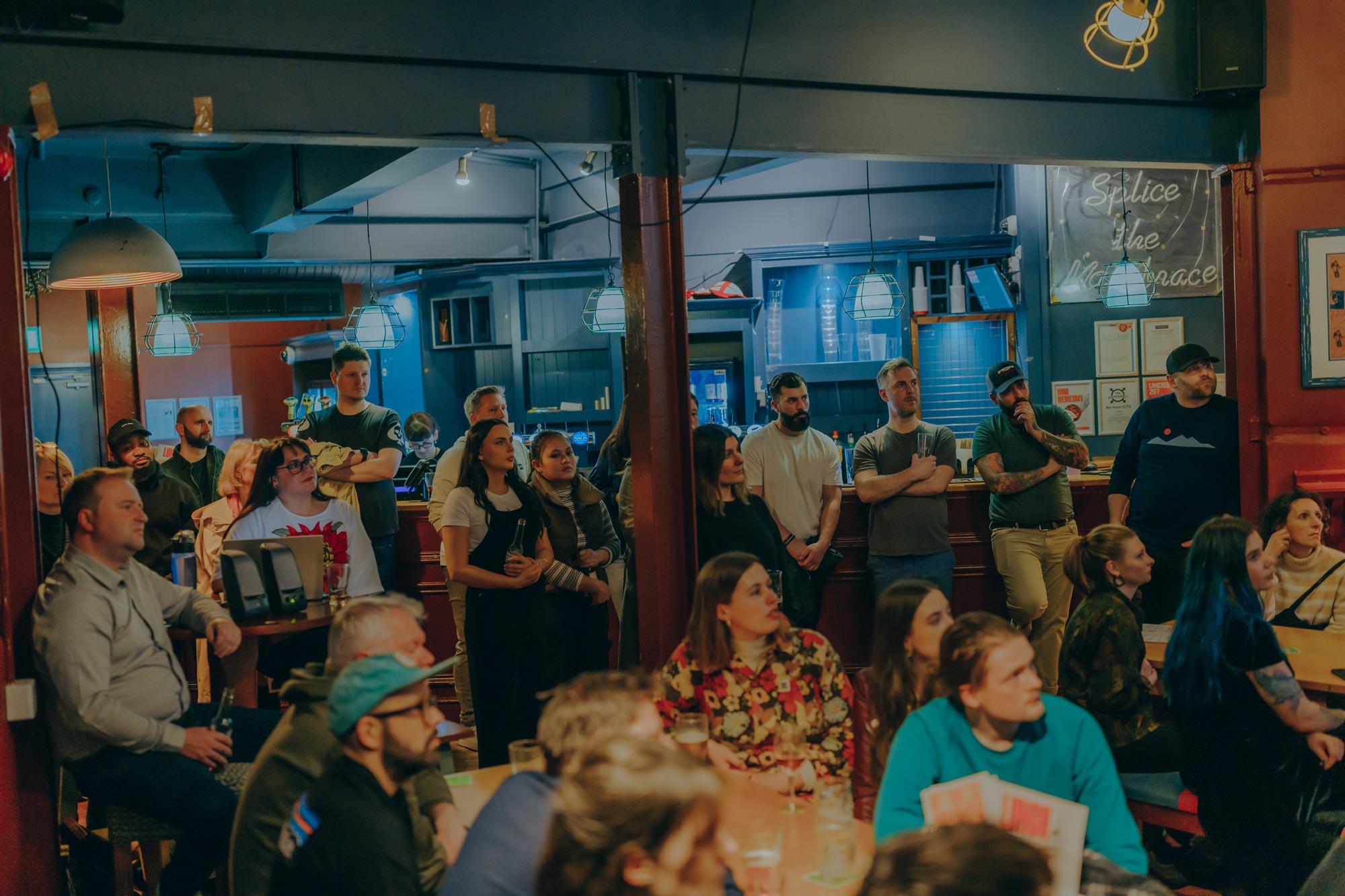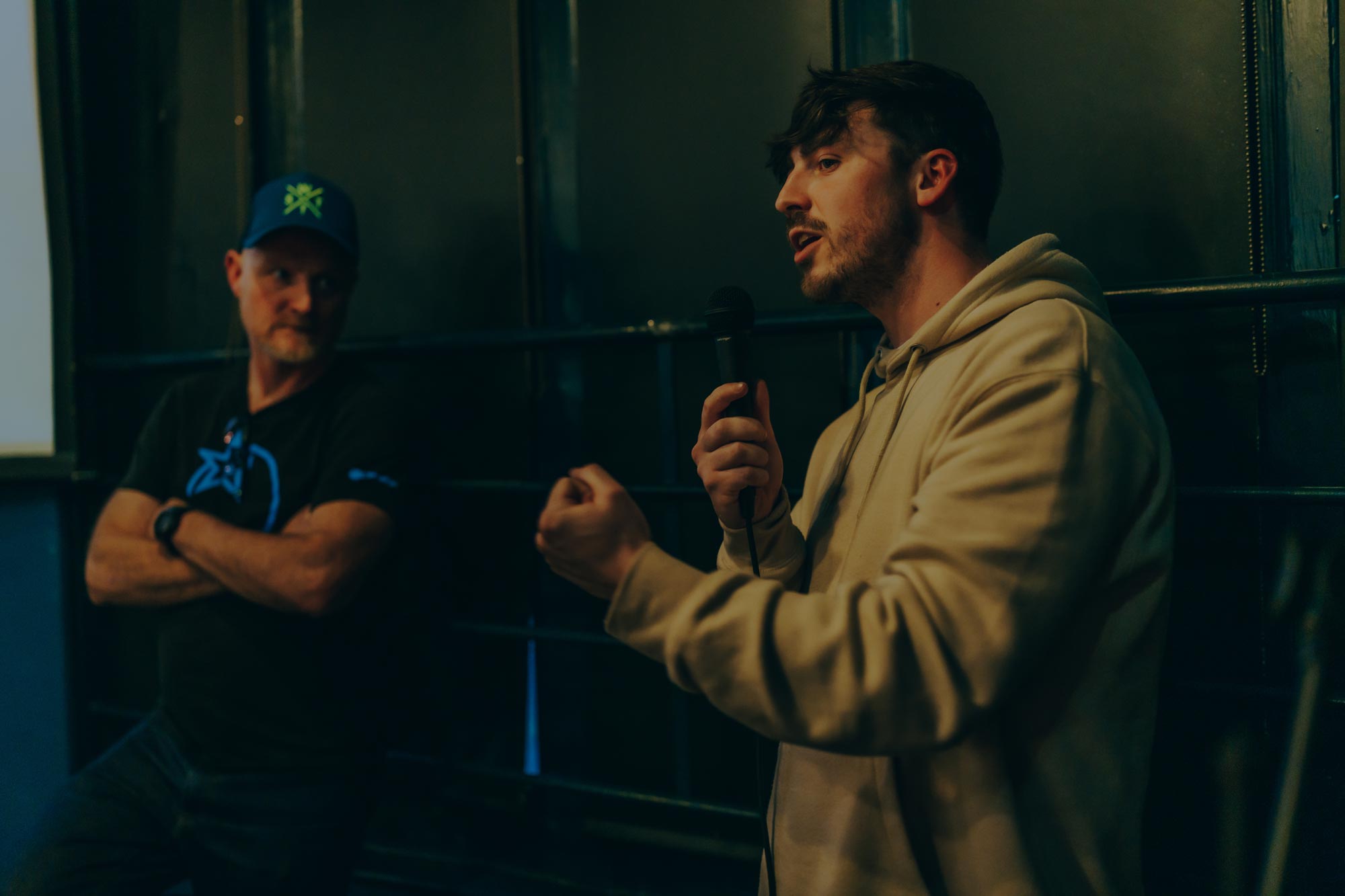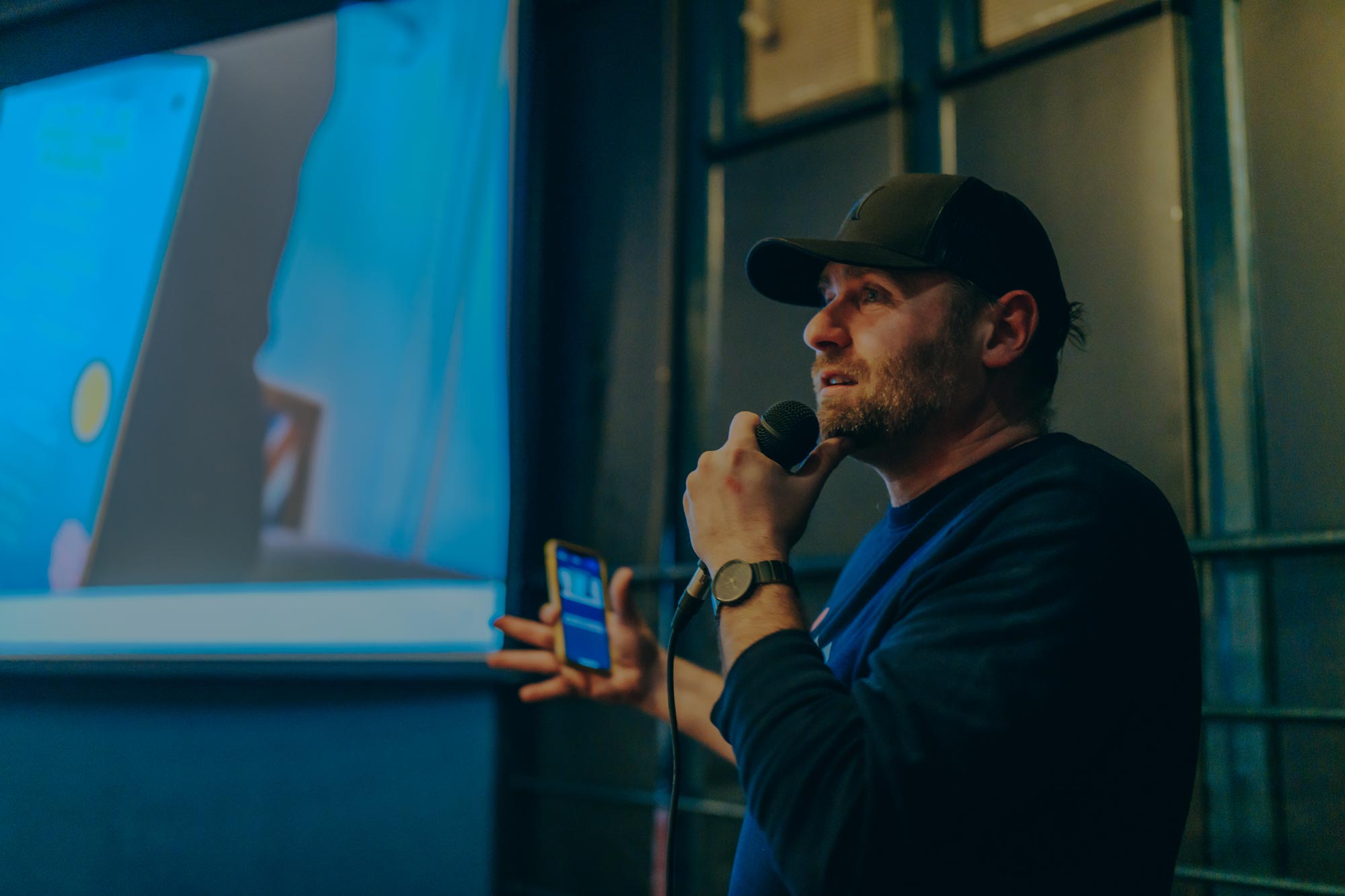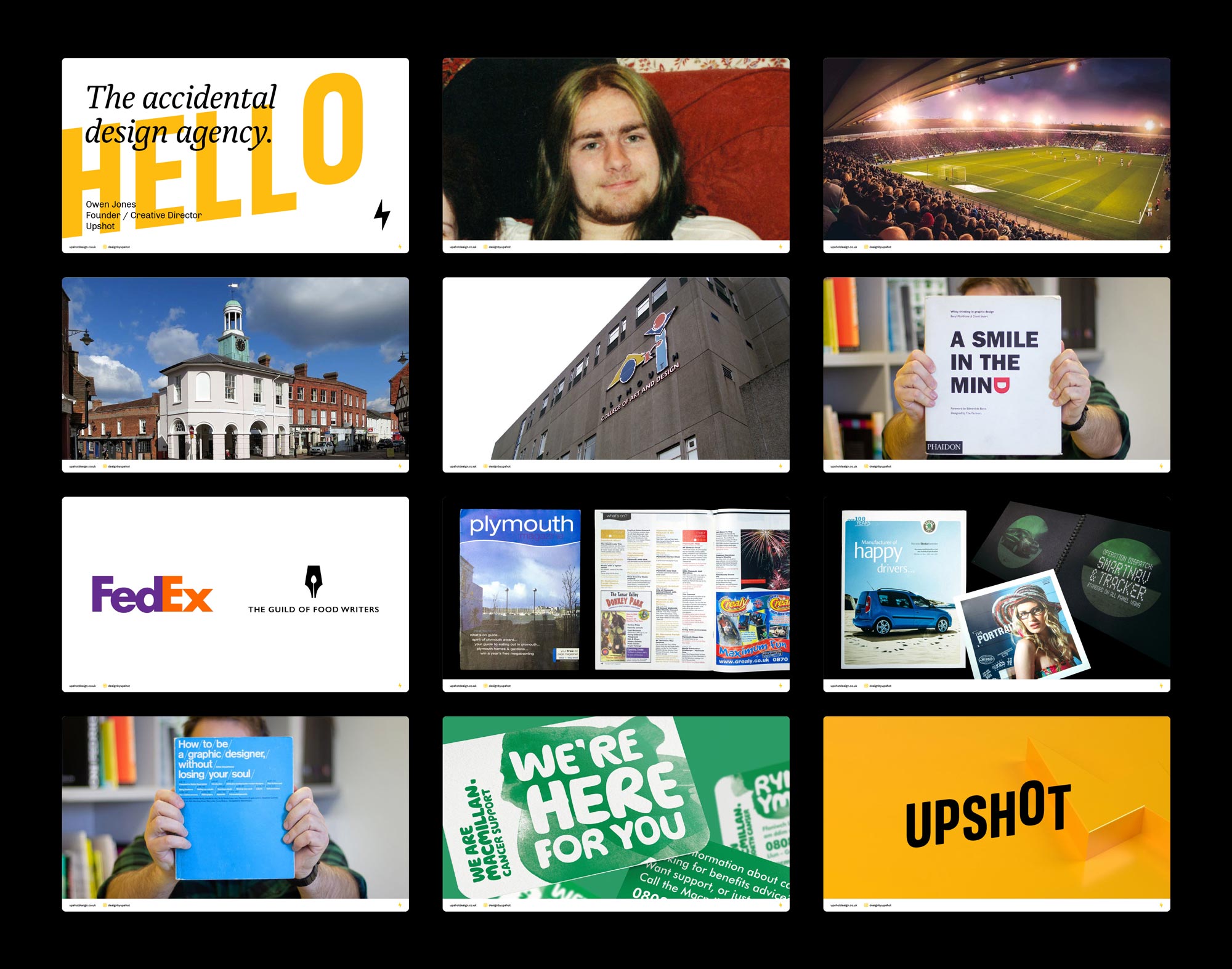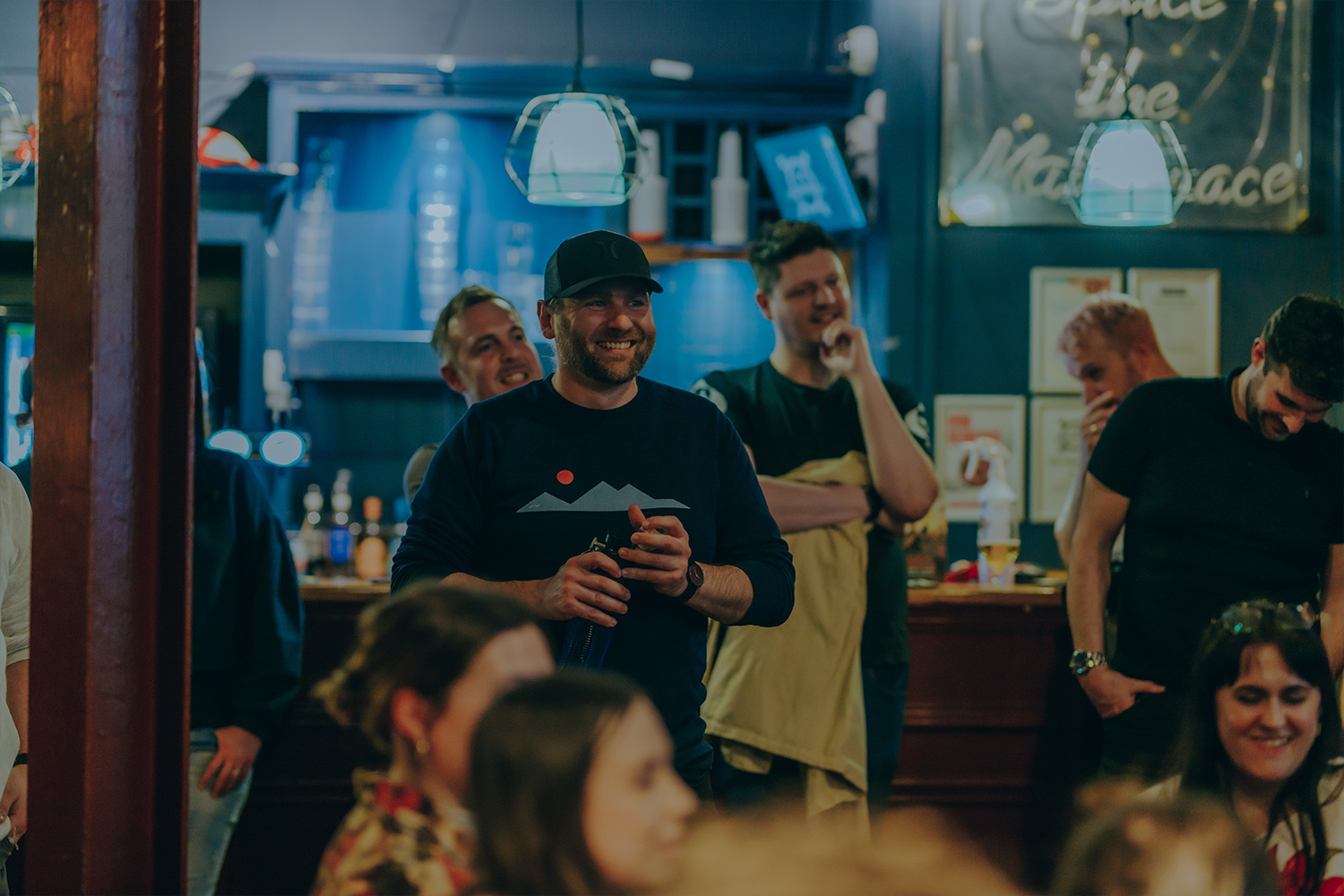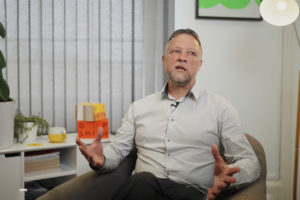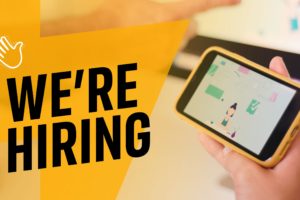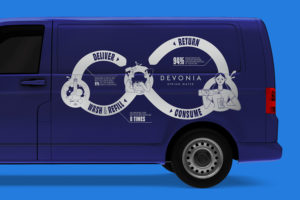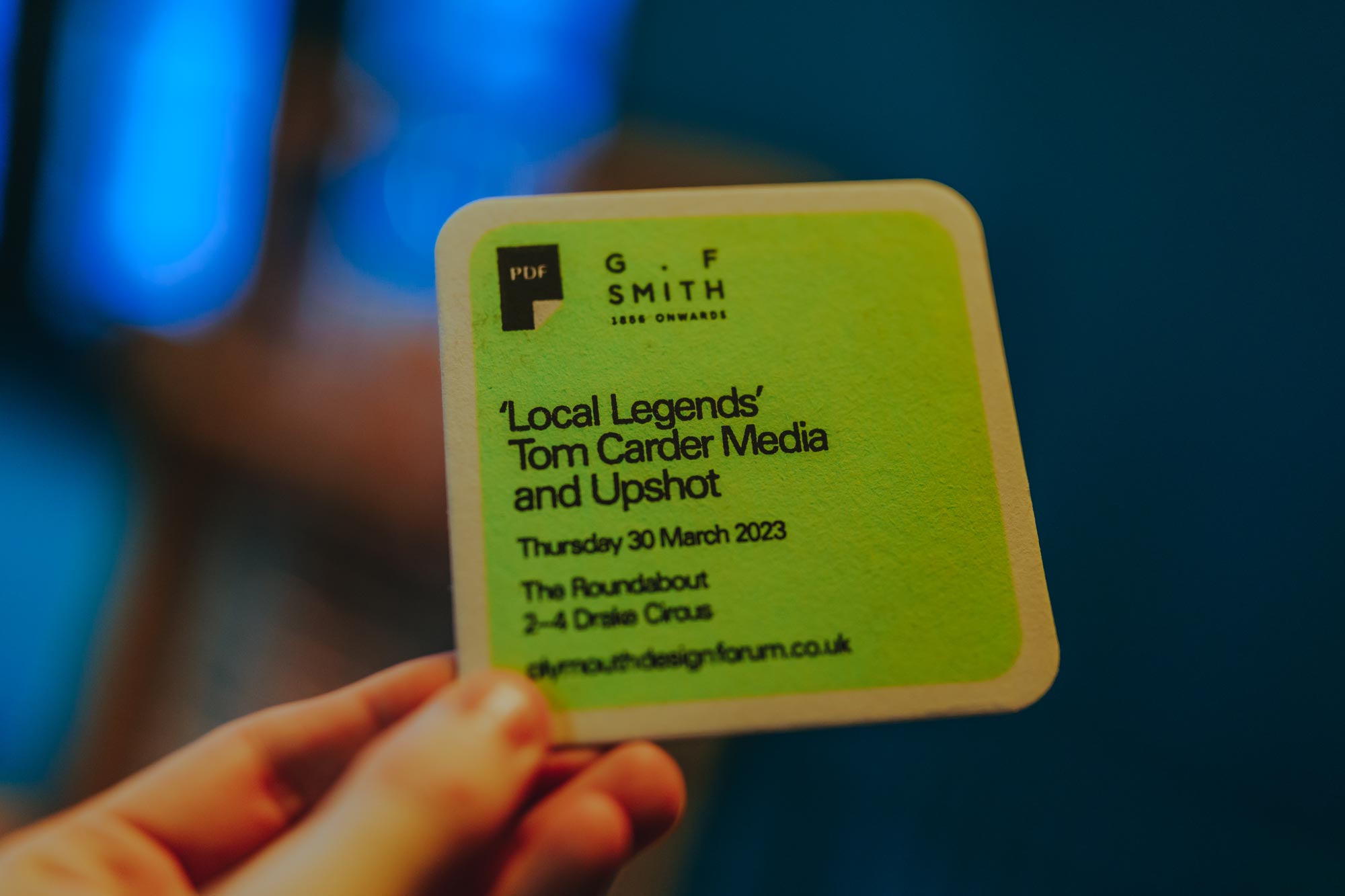
Origin Stories: The Accidental Design Agency
Article | Inspiration | News
7th April 2023
Batman Begins? Rogue One? Wolverine? Even Monsters University…?
Origin stories are popular for a reason. Understanding someone’s background and reasoning; why they made particular choices or how they ended up in certain situations intrigues us as humans. Designers, in particular, love to see how other designers reached particular creative milestones and the thought process behind a logo design, for example.
Have you ever looked back on your career and wondered how you got to where you are now? Your own origin story?
I was recently given chance to share mine and it taught me a lot.
As part of Plymouth Design Forum from the very beginning, I’ve been amazed to see how much it’s grown. From six mates around a pub table for a festive pint, to large crowds of people in rooms to hear talks from design heroes, it’s enough to give me a warm fuzzy feeling inside. So the chance to speak at the second PDF Local Legends event was an opportunity not to miss, for me.
Over 70 people headed to the Roundabout pub, and were treated to an uplifting story from one of Plymouth’s newest creative powerhouses, Tom Carder.
Tom’s incredible positivity and proactivity (and a worldwide pandemic…) inspired a move from being a mechanic to a drone photographer and film-maker, and if you’ve ever met someone nicer and more deserving of success, I’d love to meet them too.
Smells like teen naivety
My own story ran from the late ‘90s, complete with a self-deprecating reminder of how I looked as a grungy teenager with no idea what was ahead. Here’s an overview.
From the mean streets of Godalming, Surrey to the bright lights of the land of my fathers; Plymouth (mainly the floodlights at Plymouth Argyle’s Home Park stadium), I traipsed.
Somehow, despite the lack of internet, I discovered Plymouth College of Art and Design existed. I stressed that despite how well run the (newly named) Arts University Plymouth is now, my own experience left knowledge gaps the size of small cities in my own understanding of design.
Moving oop North to Taunton to study a top up year for a degree in Graphic Design & Packaging, those knowledge gaps were filled to overflowing, leaving me overwhelmed and out of my depth, but suddenly motivated. I learnt about the design industry and its rich history of hero agencies and designers – Pentagram, The Partners, Minale Tattersfield to Alan Fletcher, Milton Glaser and Saul Bass. I spent time in a real agency and saw how it worked on a daily basis.
But most importantly I learnt about the magic dust that makes design more than just decoration.
Ideas
Work torn from walls in crits. Anxious nights desperately searching for a concept rather than a trendy piece of artwork. Ideas ruled the classroom. I was gripped. Design now carried meaning – it had become a thinking-person’s game to me, and I wanted in.
Books like A Smile in the Mind and How to be a Graphic Designer Without Losing Your Soul shaped my expectations and process, and I began a career from humble beginnings designing small black and white ads in a local publishing company back in Plymouth.
Four years as a creative artworker and many hours browsing design inspo sites online left me with a hunger for more creative opportunities and when I was made redundant six months into my next job, the stars seemed to align and I took a leap of faith, starting my freelance journey.
I networked. I wrote to any south west agency I could find. I covered maternity leave in studios. I learnt. I got stuff done. I grew. I met people. Things happened.
Another big break
Then, from nowhere, a good friend suggested I join the design supplier roster at Macmillan Cancer Support where he worked in the head office in London. With nothing to lose, but no expectations, I signed up, travelled to town and showed my work. Within weeks I was working three days a week with their in-house creatives to translate a major rebrand into working assets and brand guidelines.
Over 150 projects and seven years later, when Covid hit, Macmillan were unable to continue hiring external agencies and designers, and that meant an end to our close relationship. But in the meantime I’d gained enough experience and contacts to be able to add other major charities to my portfolio.
Unexpected growth
I’d also added my first employee – Adam, a junior designer with a meticulous eye for detail in layout design. It had become clear that Owen Jones Design needed to rebrand. I needed a business plan of some kind, and to do that I needed to actually define what I did, why, and how. You know, like I do for my clients. And so, following a complicated year (client work plus internal work becomes a tricky balancing act), Upshot was born.
I finished my talk by sharing some work (designers love that, remember…). Initially just some slides with pretty pictures, but also two case studies of recent successes with Connect Academy Trust and Ivybridge Brewing Co (coming soon to an Upshot website near you).
Mmmm, takeaways
Darren Foley, PDF co-founder and bleddy legend, then interviewed me briefly and hosted a short Q&A session, and it was great to see how the talk had come across and what it had revealed. And for me, just being able to reflect on that over the past week has helped me articulate a few important learning points to share.
It’s not just about talent.
I was FAR from the most talented designer in my degree year. If you’re feeling that there are more gifted creatives with more skills than you, don’t fear. For me, the key was learning and hard work. I wanted it, so I made it happen. I’m still not the most talented, but that’s ok – I know what I’m good at, and I work around the other parts.
It’s also not just about where you’ve worked.
I’ve never worked in a big agency in London. I’ve never scaled the hierarchy, taking part in the big brand projects that give many designers what they ultimately end up taking with them into their own businesses. I’ve often felt imposter syndrome because of this, because I realise there are people with more relevant experience than me, or more confidence/skills perhaps. But although there may still be some truth in this, actually my own story is my own, as is my experience and skillset. What I bring to my clients, suppliers and employees is authentically because of my own journey, and they still work with me, so it can’t be all that bad!
Other people.
Following on from the above, if I feel like there’s something I’m not so good at, I would rather collaborate with someone who is in order to create a better end result than I could do on my own. Having my little team at Upshot, as well as a great network of partners, makes us far stronger than just me on my own. No man is an island, and I don’t think many people get very far without a little help from their friends.
You don’t have to see the future.
My career was never on an intentional trajectory. In the sense that I wanted to be a ‘designer’ and ‘design’ was a vocation, I guess it was. But I distinctly remember feeling like running an agency was never going to be part of my story. Looking back, it’s amazing to see how things have changed.
Step by step.
One thing Darren prompted in our Q&A was the idea that each step in my career was critical and set the stage for the next one. I couldn’t have skipped any of the stages to get further ahead more quickly – the foundations I’ve built have been based on a combination of my own determination, random coincidences, the help of other people and seemingly negative situations.
Values are important but they take time and work to understand.
The principles behind Upshot are real, authentic and meaningful. They’ve been there all through my career, but I hadn’t developed or summarised them until I launched the business. I’m writing a BIG article (ebook, perhaps) about this subject, so keep an eye out for that.
Find your own ‘Why’.
I talk about this in branding projects a lot. Simon Sinek’s ‘Start With Why’ book, and the Golden Circle that features in his popular TED talk are fabulous resources, but I think the penny dropped for me during my own talk that my own ‘Why’ – the principle, cause or belief behind why I do what I do – is that design and creative ideas have power to inspire and make a massive difference in situations large and small. All it takes is great ideas, executed beautifully.
Be encouraged – look back.
I shared a piece of work I created in my first design job. In a manic 48hr period, including one all nighter, I designed a whole magazine launch issue from scratch. I’d never done anything like it before. And as cringeworthy as it is to look back at the dreadful design choices and typographic mistakes, I’m proud of myself for getting the job done. And now I can look back at how my skills were then, and be massively encouraged by how they are now!
–
Written by Owen
Event photography by Luke Frost, courtesy of PDF.


